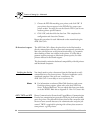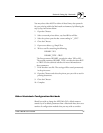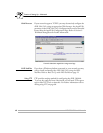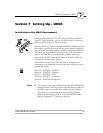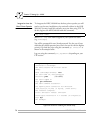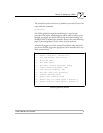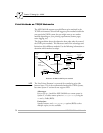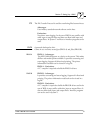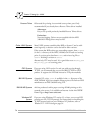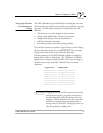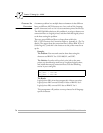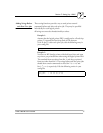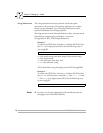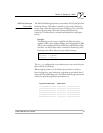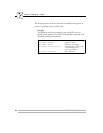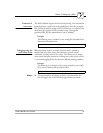
Section 7: Setting Up - UNIX
74 AXIS 540/640 User’s Manual
Reverse Telnet Often used for printing via a terminal server printer port. Only
recommended if you already have a Reverse Telnet driver installed.
Advantages:
Easy to set up with previously installed Reverse Telnet drivers.
Limitations:
No status logging. Drivers are not supplied with the AXIS
540/640. Existing drivers may be slow.
Other UNIX Systems Most UNIX systems resemble either BSD or System V and so with
some ingenuity, a solution can be devised for other variants.
If the system has BSD socket type networking support, then prosbsd
(in the
bsd directory of the AXIS 540/640) can be used as a starting
point. It receives print data from
stdin, and writes a log file to
stderr. Nothing is written to stdout.
Alternatively, FTP may be used. It is a good idea to use
bsd/ftp_bsd
or
sysv/ftp_sysv as a starting point.
OS/2 Systems If you are using OS/2 version 2.x and you wish to print through
TCP/IP, we recommend that you use the IBM TCP/IP for OS/2
product. It supports the LPD and interactive FTP print methods.
IBM MVS Systems A sample JCL script, jclex, is available in the mvs directory of the
AXIS 540/640. It gives an example of how to print a file from an MVS
mainframe to an AXIS 540/640 using FTP.
IBM AS/400 Systems Axis has produced a white paper covering AS/400 printing to Axis
network print servers. It is available on Internet via the Axis WWW
Home Page at http://www.axis.com/.
Windows NT
Systems
If you are using Windows NT version 3.5 or later, you can use LPD
printing over the TCP/IP protocol. For instructions on installing the
TCP/IP protocol stack on your Windows NT platform, refer to
Windows NT - LPD Printing on page 54.



